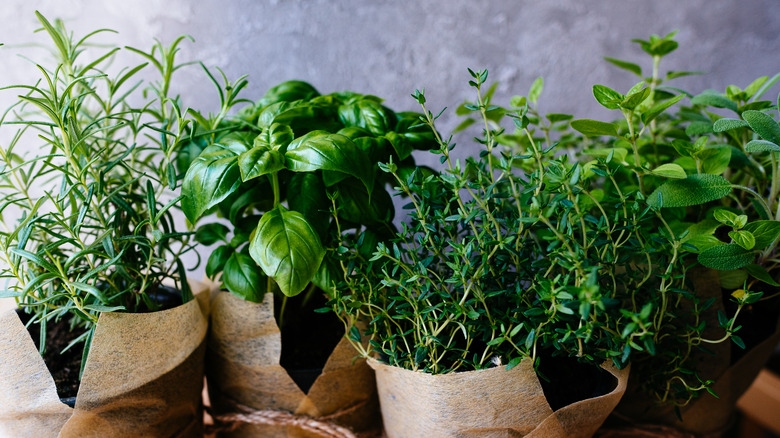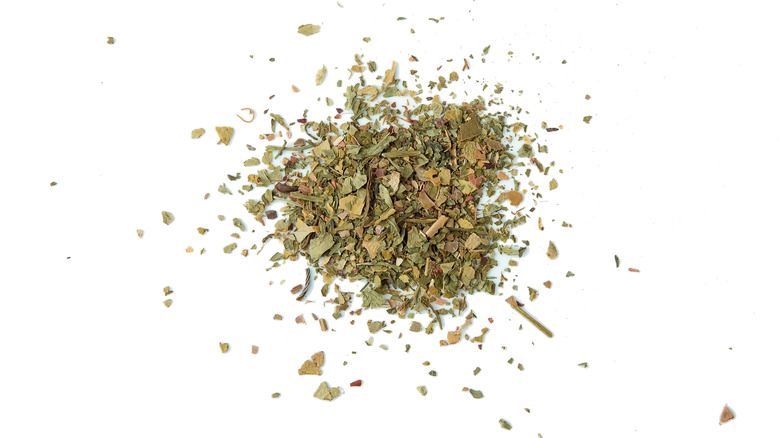What You Need To Know Before Substituting Dried Herbs For Fresh
Cooking with herbs is a true sensory pleasure. With their fresh aroma, bright colors, and flavors, they add so much to all kinds of dishes. But, sometimes, you may find yourself needing to reach for a shaker or jar of dried herbs. There's no shame in that, given that dried herbs have unique properties like relatively long shelf lives (though there are some good ways to store fresh herbs, too).
That said, you should know that dried herbs and fresh herbs are not created equally. According to Martha Stewart, dried herbs are far more potent than their fresh counterparts. That's why you can't exactly exchange them in any given recipe. This means that one of the most important things you need to know about the two types of herbs is how much of each to use when substituting for the other kind.
Since dried herbs tend to pack much more into a measurement in terms of flavor and taste thanks to their concentration, it's important to use far less of them. In fact, where a recipe calls for a tablespoon of fresh herbs, you should only use one teaspoon of its dried counterpart. Naturally, the same is true in reverse, as one tablespoon of fresh herbs can be swapped in for a teaspoon of dried.
When you add herbs also matters
Apart from how much fresh or dried herbs you need to successfully substitute one for the other, it's also pretty important to pay attention to when you add them to your dish as it cooks, says Epicurious. Dried herbs are somewhat easier to use in that you can add them relatively early to a dish without risking bad flavor. Fresh herbs, however, are a bit trickier.
Epicurious explains that fresh herbs should typically be added later in the cooking process, as some can become bitter-tasting if they are cooked for too long a time. That's why many recommend adding fresh herbs to a dish just 30 minutes to one hour before it's ready to hit the table, at least if the meal in question is something that's cooked low and slow. For other, faster-cooking dishes, add the fresh herbs just before the dish is done cooking. Otherwise, you can simply use fresh herbs for a bright and flavorful garnish that's applied immediately before serving.
And it's important to know that, while some flavors concentrate during the drying process, a few herbs lose some serious potency when dried. This means that plants like sweet basil and cilantro really are best if you can use them fresh.

